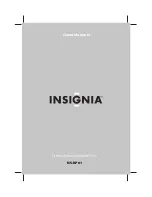
8785081
200A AC/DC Dial Control TIG Welder 202KE
V4.2
12
For technical questions call 1-800-665-8685
c. Do not weld or cut near chlorinated solvents or in areas that
chlorinates solvents can enter. The heat or ultraviolet light of the arc
can separate chlorinated hydrocarbons into a toxic gas (phosgene)
that can poison or suffocate the user or bystanders.
6. Check the Safety Data Sheet for the proper handling and safety precautions
for consumable welding rods as the coating can have multiple chemicals.
COMPRESSED GAS CYLINDER PRECAUTIONS
WARNING! Improper handling or maintenance of compressed gas cylinders
and regulators can result in serious injury or death. Do not use a cylinder or
its contents for anything other than its intended use.
1. Only use inert or nonflammable gas with the welding unit such as Carbon
Dioxide, Argon or Helium with the welding unit.
a. Never use flammable gases. They will ignite and may result in an explosion
or fire that can cause death or injury.
2. Do not attempt to mix gases or refill a gas cylinder. Exchange a cylinder or
have it refilled by a professional service.
3. Do not deface or alter the name, number or other markings on a cylinder. Do not
rely on a cylinder’s colour to identify the contents. Do not connect a regulator to
a cylinder that contains a gas that the regulator was not designed to handle.
4. Do not expose a cylinder to excessive heat, sparks, slag, flame or any other
heat source.
a. A cylinder exposed to temperatures above 130 °F will require water
spray cooling. This method may not be compatible with electric
welding units due to the hazard of electrocution.
5. Do not expose a cylinder to electricity of any kind.
6. Do not attempt to lubricate a regulator. Always change a cylinder carefully
to prevent leaks and damage to the cylinder’s walls, valve or safety
devices.
7. Gases in the cylinder are under pressure. Protect the cylinder from bumps,
falls, falling objects and harsh weather. A punctured cylinder under
pressure can become a lethal projectile. If a cylinder is punctured, do not
approach until all pressure is released.
a. Protect the valve and regulator. Damage to either can result in













































